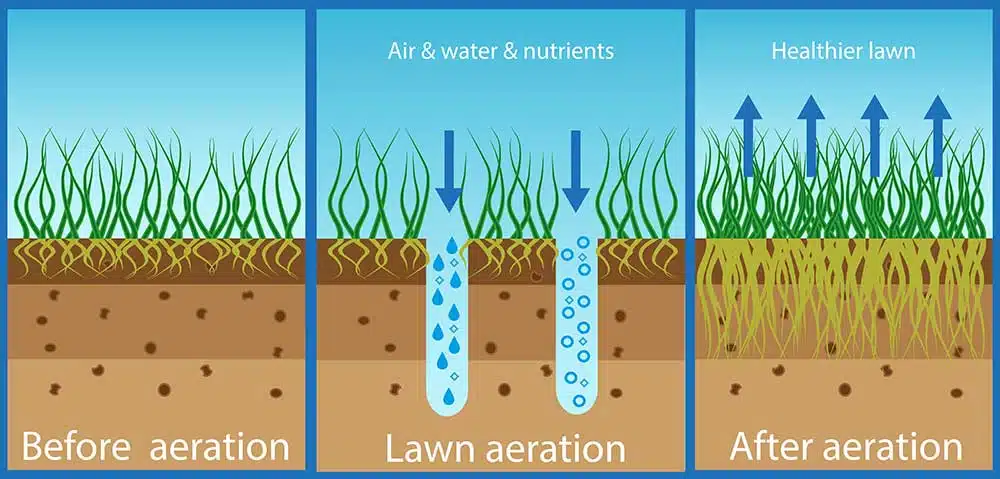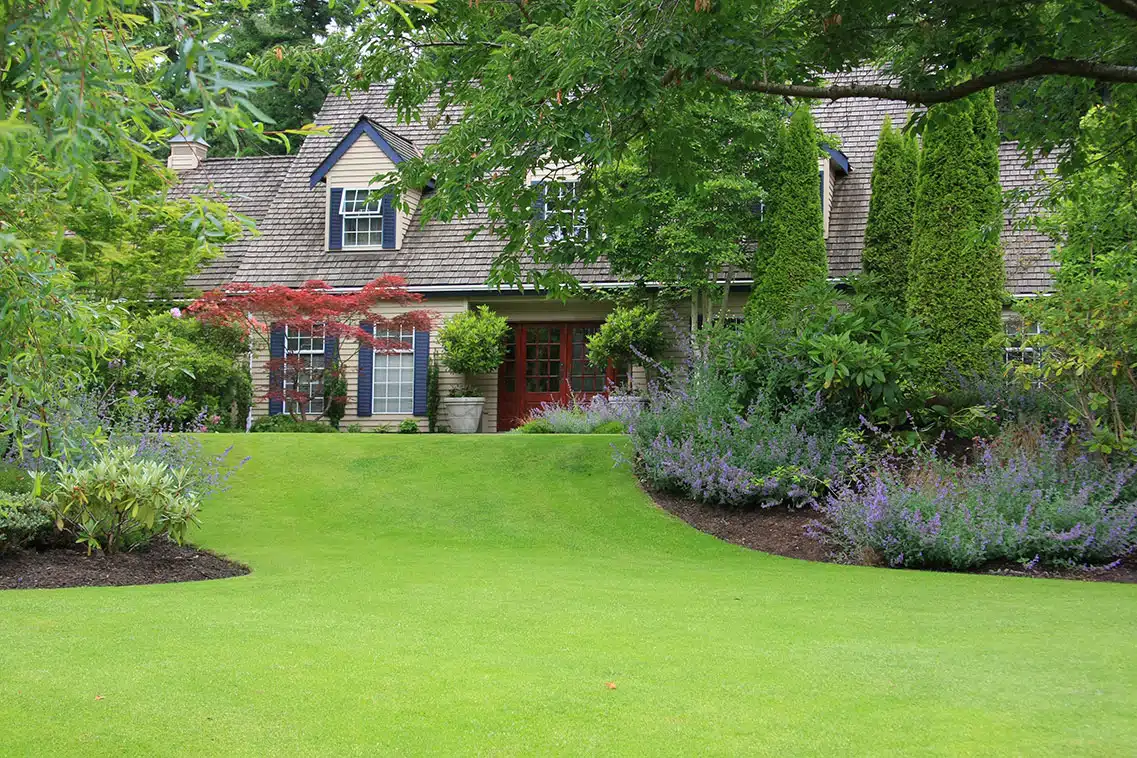Lawn Aeration for a Beautiful Lawn Year Round
An aerated lawn is a thicker, healthier, more resilient lawn.
Why aerate your lawn?
Lawn aeration is vital for a healthy yard. An aerated lawn is a thicker, healthier, more resilient lawn. By aerating, you make sure that your lawn is the best it can be—year-round.
Lawn aeration is the process of extracting tiny plugs of soil from all over your yard. The resulting air pockets in your lawn help counter the effects of soil compaction.
The main reason for aerating is to alleviate soil compaction. Compacted soil has too many solid particles, making it dense and hard to penetrate, preventing the proper circulation of air, water, and nutrients within the soil.
Proper, consistent aeration leads to a lawn with stronger, healthier grass roots. In other words, a more beautiful lawn.
You’ve made a significant investment in your home’s lawn; make the most of that investment by having Yardsy aerate your lawn twice yearly.

Benefits of aeration and overseeding:
- Improves access to air, water, and fertilizers to grass roots
- Enhances your lawn’s heat and drought stress tolerance
- Breaks down potentially harmful thatch
- In the fall, overseeding is a way to front-load your lawn with fescue grass seed just before it goes into cold-weather dormancy. Because lawn aeration breaks up the soil, seeds will have the best possible shot at healthy growth. It’s like a headstart on going green!

Spring Lawn Aeration
Shocking, we know, but spring aeration – for Bermuda or other warm-season grasses – happens in late spring (or very early summer). That’s just before peak growth time. This ensures the grass recovers quickly and fills in small holes created during aeration, resulting in stronger, thicker turf.
You can also keep an eye out for telltale signs that your grass is not getting the nutrients it needs from the soil:
- Thin or patchy grass. That’s a sign roots are struggling to get nutrients.
- The soil is noticeably hard to the touch.
- Rainwater puddles up instead of being absorbed. Over time, weather and frequent use both contribute to soil compaction.
The best time for aeration is during the growing season, when the grass can heal and fill in open areas once the soil plugs are removed. Ideally, aerate lawns with cool-season grass in the early spring or fall and aerate lawns with warm-season grass in the late spring.
Fall Lawn Aeration
When it comes to growing grass in cool weather, nothing competes with preparing and seeding with fescue. Regular aeration combined with overseeding will prepare your lawn for the cold weather and give your spring lawn a head start.
What is Fescue Grass?
Fescue is a perennial grass that’s known for being climate-tolerant. It’s a popular choice among homeowners living in colder winter climates. But it also does well in warmer climates, too. It’s an excellent choice for southern climates like those in Georgia, North Carolina, and Tennessee.
Fall fescue lawn aeration and seeding typically take place in the early stages of fall as temperatures cool off and weeds die out. The goal is to establish contact between grass seed and soil nutrients before everything slows down for the winter. When spring growth begins, you get a huge payoff in the quality and quantity of grass in your lawn.
Conclusion
Remember to be on the lookout for the signs of soil compaction, which is a sure sign you need aeration:
- Thin or patchy grass. That’s a sign roots are struggling to get nutrients.
- The soil is noticeably hard to the touch.
- Rainwater puddles up instead of being absorbed. Over time, weather and frequent use both contribute to soil compaction.



















































